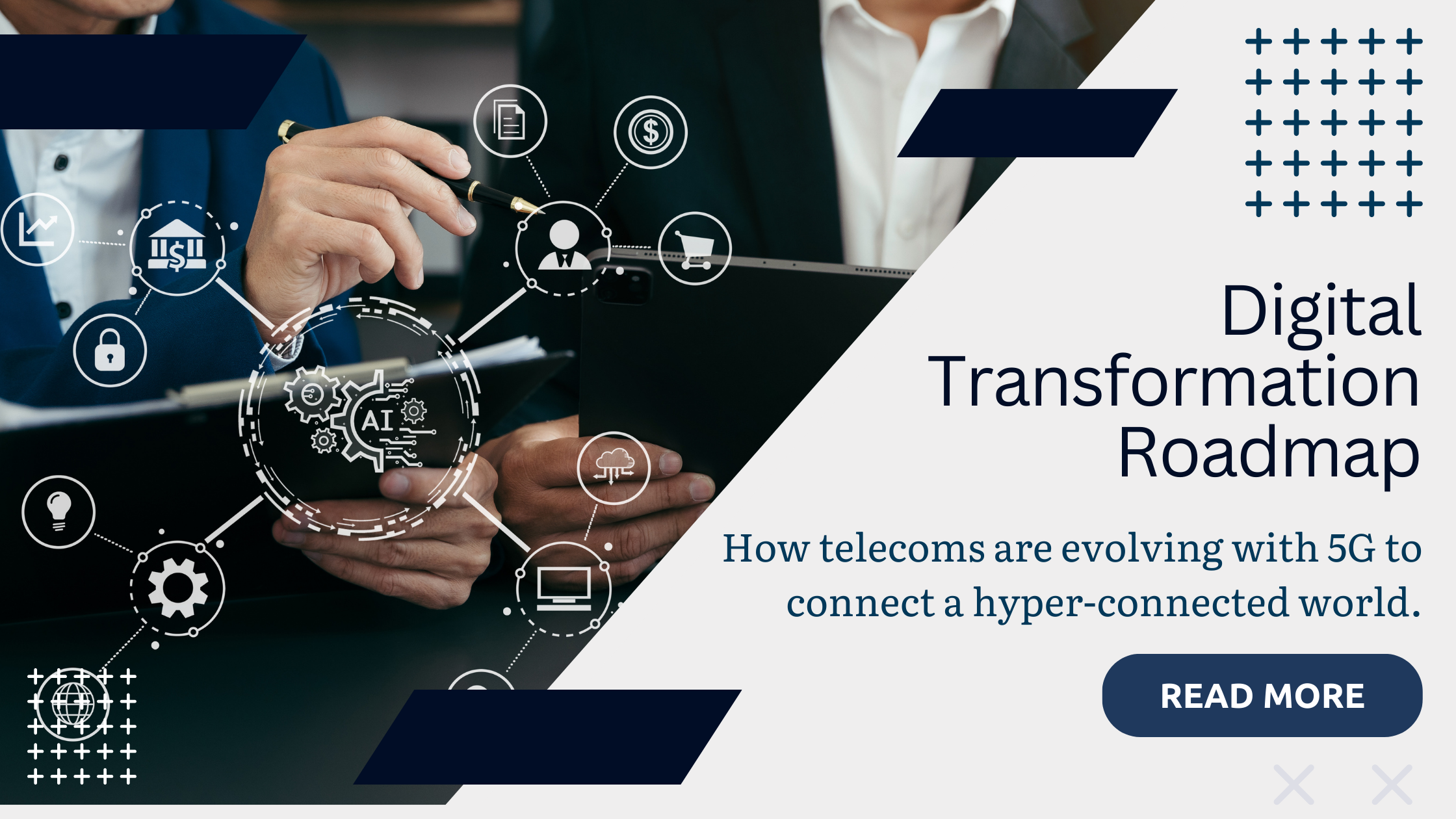The world of telecoms is undergoing a revolution driven by a mighty force – 5G. It’s not just about faster downloads; it’s about rethinking how we connect, innovate, and experience the world around us. Concepts and ideas that were only explored in science fiction movies and novels are moving closer to reality. Where machines talk to each other, cars drive themselves, and doctors perform surgery remotely. The phone isn’t just for calls and texts but a key to a vibrant, connected universe. This blog post delves into the roadmap telecom companies are following to evolve alongside 5G, paving the way for a hyper-connected future that benefits individuals, businesses, and societies alike.
5G: The Engine of Hyper-Connectivity and Innovation
5G is more than just faster speeds; it’s a complete transformation of the telecom landscape. With its ultra-low latency, massive network capacity, and diverse connectivity options, 5G unlocks an overflow of opportunities for telecoms. From empowering the Internet of Things (IoT) with real-time data exchange to enabling revolutionary applications like augmented reality (AR) and autonomous vehicles, 5G acts as the engine driving this hyper-connected future. More telcos are investing heavily in 5G infrastructure rollouts, collaborating with network equipment providers, and developing targeted strategies to unleash the full potential of this transformative technology.
Big Data and AI: Unlocking Insights and Personalisation
The vast amounts of data generated by networks and customer interactions hold immense potential. Telecoms are leveraging big data analytics and artificial intelligence (AI) to extract valuable insights, gain a deeper understanding of customer behaviour, and personalise experiences like never before. AI-powered chatbots can handle customer inquiries efficiently, predictive maintenance identifies network issues before they occur, and targeted marketing campaigns leverage data-driven insights to personalise offers and increase engagement.
Embracing the Cloud: Redefining Infrastructure and Agility
At the heart of digital transformation lies the cloud. Traditional, on-premise infrastructure is giving way to cloud-based solutions, offering unparalleled agility, scalability, and cost efficiency. More telcos appear to be migrating some network functions and core systems to the cloud, enabling them to adapt rapidly to changing demands, launch new services quickly, and scale resources seamlessly. This shift allows them to focus on their main competencies – connectivity and customer experience – while leaving the heavy lifting of infrastructure management to cloud providers.
Network Disaggregation and Open RAN: Rethinking Network Architecture
Traditional, monolithic network architectures are proving too rigid for the demands of the digital age. To foster greater flexibility and innovation, telecoms are exploring network disaggregation and Open RAN. This approach breaks down the network into smaller, interoperable components, allowing operators to mix and match equipment from different vendors and adopt the latest technologies quickly. This not only reduces vendor lock-in but also promotes a more open and dynamic telecom ecosystem.
The Telecom Revolution: Adapting to the Hyper-Connected Future
To thrive in this hyper-connected age, telecom companies need to embrace not just technological advancements like 5G but also a whole new way of thinking. For telecoms, this means a complete overhaul:
- Cloud-based Networks: They might want to decrease dependence on the bulky equipment and embrace the agility of the cloud. 5G networks are built with flexibility in mind, allowing telecoms to adapt quickly and scale services as needed.
- New Business Models: Forget just selling data plans. 5G opens doors for partnerships with tech giants, content creators, and even new industries, creating a diverse ecosystem of connected services.
- Prioritising Security and Privacy: With so much data flowing, robust security measures are crucial. Telecoms must invest heavily in protecting networks and customer information, building trust in the hyper-connected world.
The larger impact:
- Businesses: Imagine factories optimising production in real-time, thanks to 5G-connected sensors or remote workers collaborating seamlessly across continents. The possibilities for efficiency and innovation are endless.
- Individuals: Doctors will be able to monitor patients remotely, and students can attend virtual classes from anywhere in the world. 5G brings connectivity to underserved areas and empowers individuals like never before.
- Society: Smart cities that manage traffic, optimise energy use, and respond to emergencies in real-time. 5G can transform how we live together, creating safer, more efficient, and sustainable communities.
Challenges and Opportunities: Navigating the Hyper-Connected World
The path to a hyper-connected future is paved with obstacles, but these are challenges we can overcome:
- Infrastructure Rollout: Building the 5G infrastructure requires significant investments and navigating complex regulatory landscapes. Not all organisations and governments have the funding available to expedite the process.
- Digital Divide: Ensuring affordable and equitable access to this new era of connectivity for everyone, regardless of location or socioeconomic background, is crucial. This isn’t only about making the infrastructure available but creating a digitally literate society.
- Unskilled Workforces: The digital transformation journey requires a skilled workforce prepared to handle new technologies and navigate the evolving landscape. Telecoms must train, attract, and retain top talent with expertise in the areas of AI, cloud computing, and network security in order to stay ahead of the curve.
- Device Compatibility: Not all devices are 5G-ready yet, and the transition will take time. While some users continue to rely on older networks, companies will continue to provide services for these needs. As long as devices are manufactured to operate on 4G, 3G, and even 2G networks, there will be a user base opting for these connectivity options.
- Cybersecurity: 5 G’s interconnected nature brings new security risks. In order to build customer trust, protecting personal data and critical infrastructure requires robust cybersecurity measures and responsible data handling practices.
Conclusion
The digital transformation journey for telecoms is not a destination but an ongoing process. By embracing the opportunities presented by 5G together with other transformative technologies, like cloud computing, AI, Open RAN, and IoT, telecoms can evolve from mere connectivity providers to facilitators of a hyper-connected future. By prioritising agility, innovation, and customer-centricity, they can unlock new revenue streams, empower individuals and businesses, and contribute to shaping a more connected and prosperous world. The road ahead may be filled with challenges, but by taking bold steps and embracing the winds of change, telecoms can navigate this exciting era of transformation and redefine their role in the digital world.









